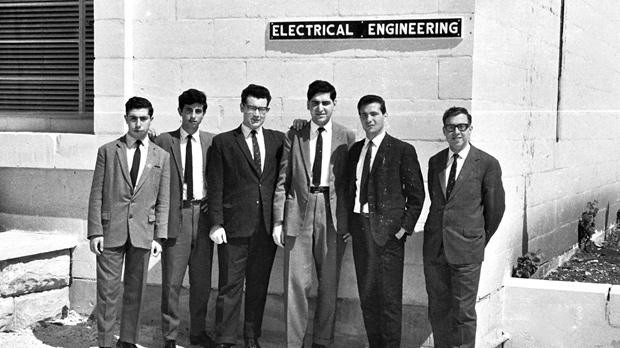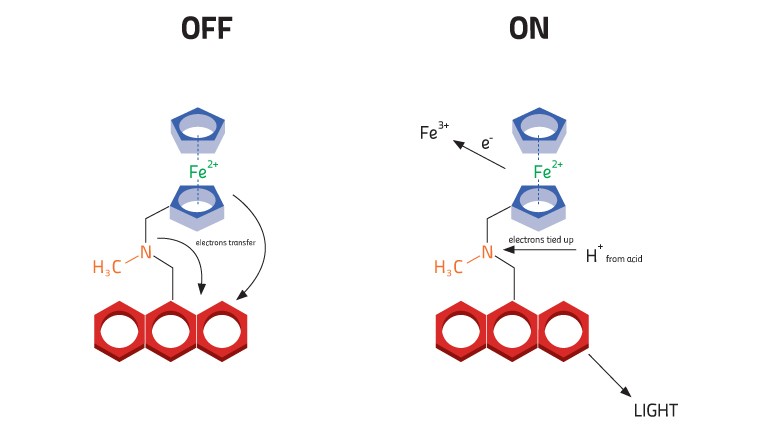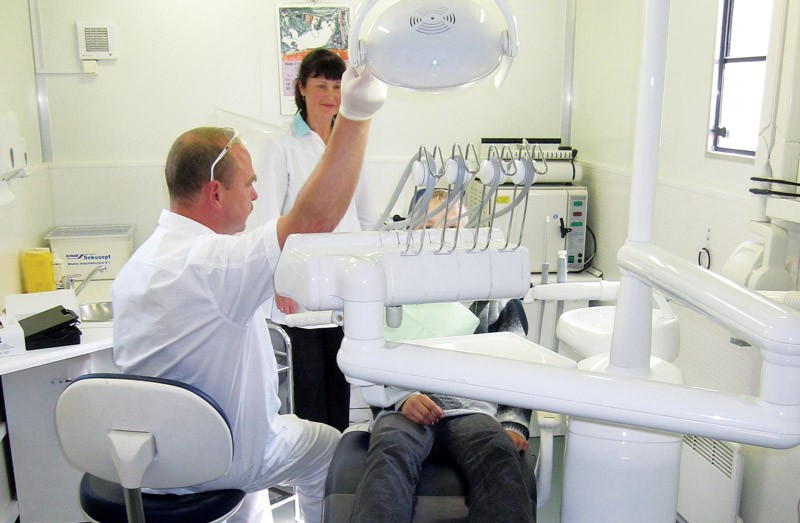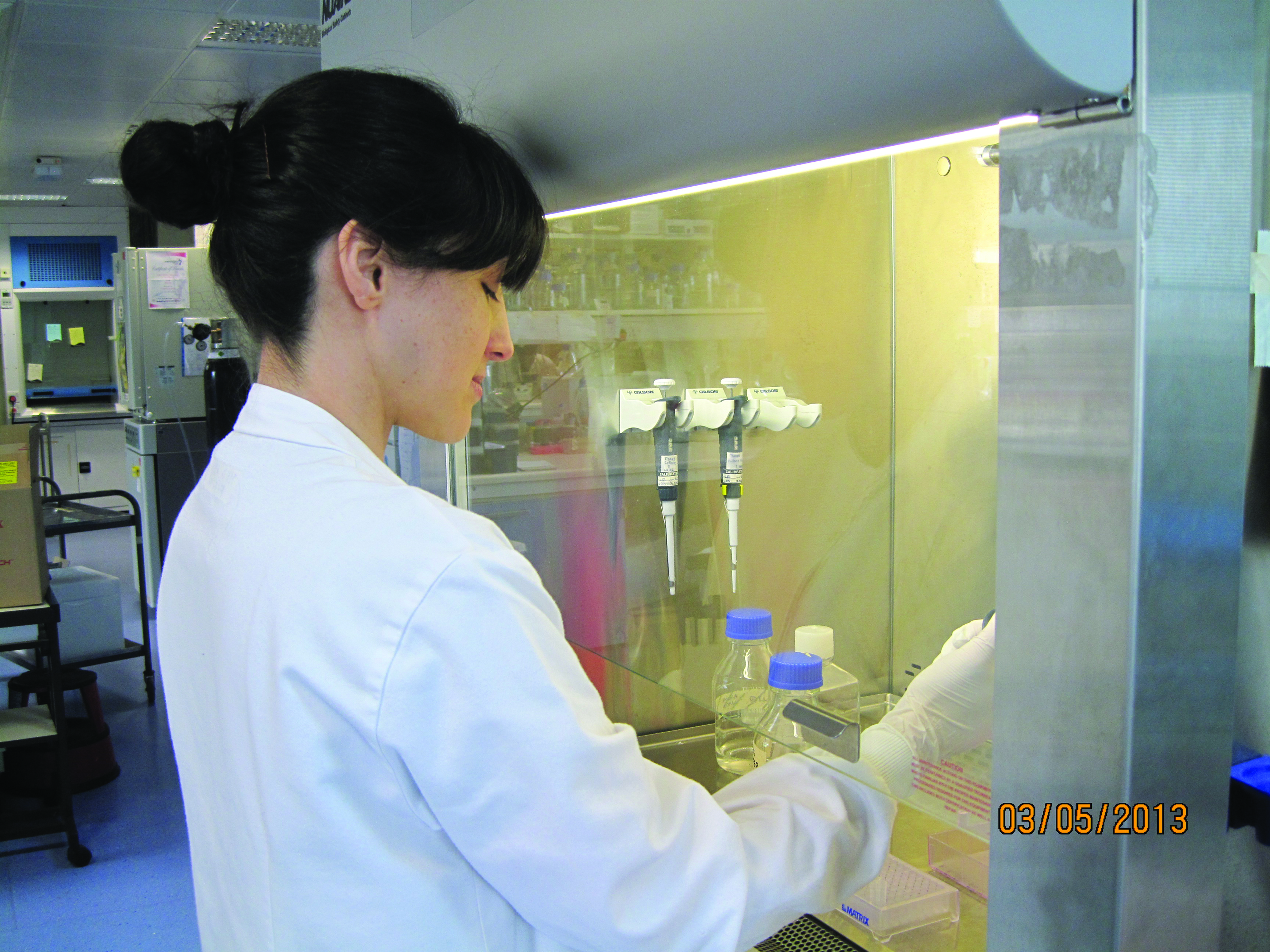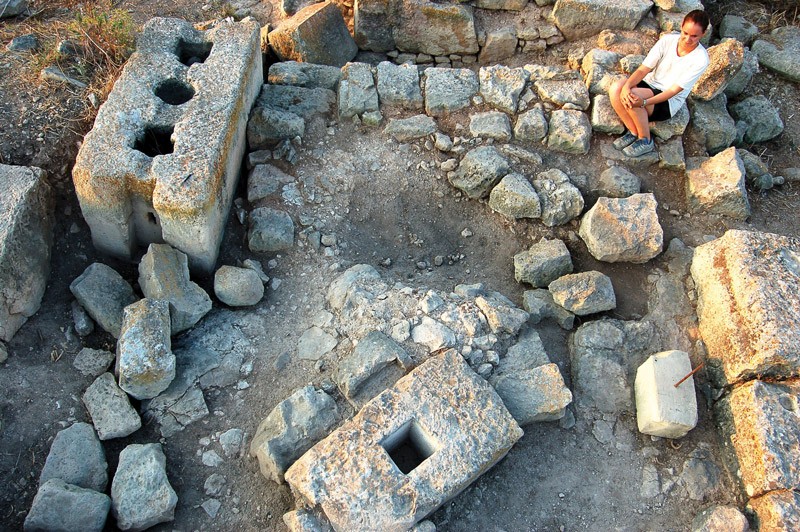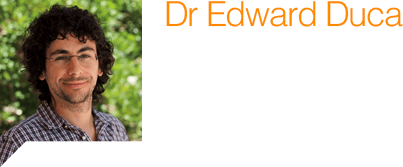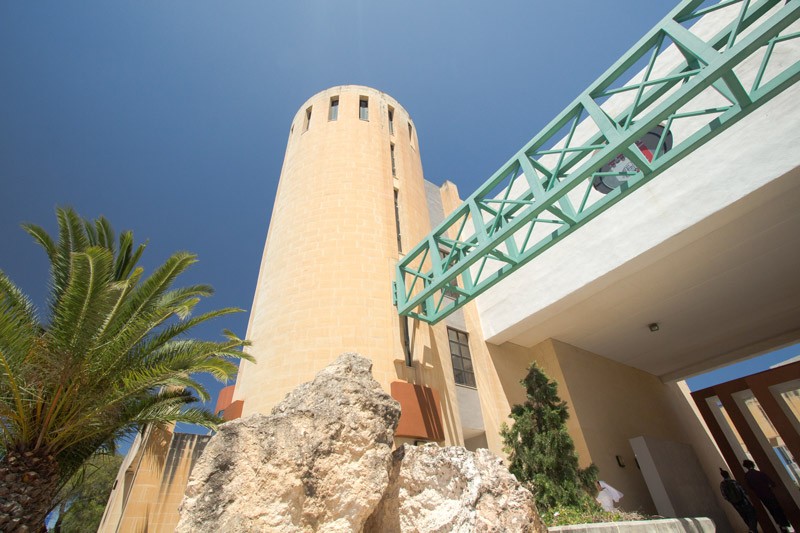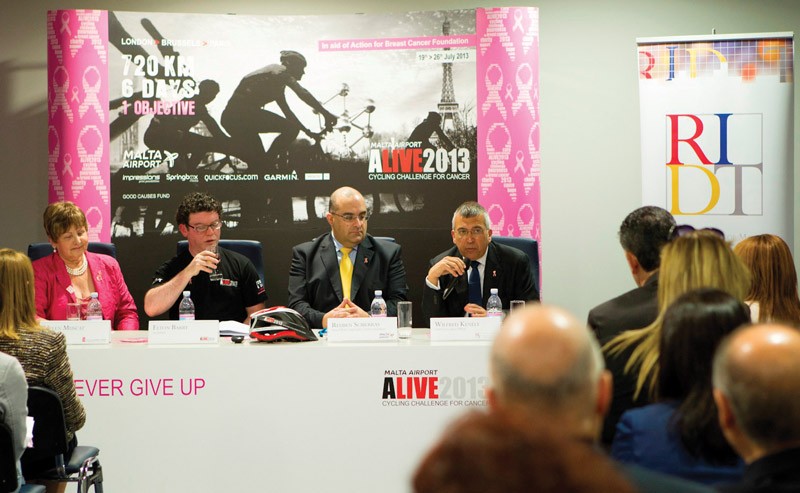Treating stone to save Maltese Culture
Malta has three UNESCO world heritage sites which need constant conservation. Generally, it is better to preserve the original building material than replace it. The conservation method called consolidation can glue deteriorating stone material to the underlying healthy stone maintaining it, but few consolidants have been tested on local Globigerina limestone. Sophie Briffa (supervised by Daniel Vella) tested a new set of consolidants which are stronger than other compounds but affected the colour of the stone. She applied five different conditions on the stone. The first three were novel treatments. They were based on a hybrid silane (tetraethylorthosilicate (TEOS) and 3-(glycidoxypropyl)trimethoxysilane (GPTMS)) but one had nanoparticles, one had modified nanoparticles, and the other lacked them. The fourth was a simple laboratory-prepared TEOS silane. The fifth was untreated limestone samples for comparison.
The treatments successfully penetrated the stone’s surface. Microscopy coupled with other techniques including mercury intrusion porosimetry carried out in Cadiz, Spain, confirmed this infiltration and the stone’s physical qualities: strength, drilling resistance, and so on. Half of the treated stones underwent accelerated weathering. The consolidants with nanoparticles or modified nanoparticles were stronger than the other treatments. They also maintained the original surface colour and improved the stones’ ability to absorb water. On the other hand, they were less resistant to salt crystallisation that can damage the stone making it brittle.
The best consolidant for Maltese stone has not yet been found. Ideally, it should have a good penetration and good weathering properties that preserve the stone’s appearance. It should allow ‘breathability’ and be reversible. Current stone consolidation techniques are irreversible since they permanently introduce new material into the stone. These are only acceptable since consolidation is a last attempt to save the stone before complete replacement.
French writer Victor Hugo summed up the importance of this research when he said, ‘Whatever may be the future of architecture, in whatever manner our young architects may one day solve the question of their art, let us, while waiting for new monuments, preserve the ancient monuments. Let us… inspire the nation with a love for national architecture’.
This research was performed as part of an M.Sc. in Mechanical Engineering at the Faculty of Engineering. The research was funded by the Strategic Educational Pathways Scholarship (Malta).
Logical chemicals
Chemistry is not usually associated with logic gates, sensors, and circuits. However, a new breed of chemist — the molecular engineer — is adding a bit of chemical spice to them. Given the right tools, his/her hands can synthesize anything, from molecules that assemble into large structures to others that can display information about their environment.
Thomas Farrugia (supervised by Dr David Magri), created a molecule that could be toggled between an ON and OFF state using AND Logic. AND logic means that it needs two chemicals to switch state, adding just one chemical makes no difference. The states are easily recognised by shining UV light on the molecule since only the ON state produces blue light.
In the OFF state, the movement of electrons from two input sites prevents light being released. Stopping the electron transfer enables light release. The blue light shines when specific chemicals bind to the two input sites. The chemicals use up the electrons being transferred, letting the output of the molecule absorb UV light and shine blue light.
The two chemicals added were an acid and an iron (III) source (like what is found in rust). The acid provides hydrogen ions that bind to the nitrogen atom, whilst the iron (III) ions attack the molecule’s iron (II) atom (pictured as Fe). The molecule displays AND logic since it needs both the acid and iron (III) to turn on light emission.
The molecule was synthesised using a one step reaction and tested to determine the strength of the ON and OFF signals. Testing by fluoresence spectroscopy is essential to determine whether it would make a viable sensor, since the technique compares the strength of the ON and OFF state. The molecule will only work well if there is a large difference between the different states, since a machine needs to detect the change.
This molecule can sense the extent of acidity and iron (III) ions in a solution, and convey that information using light, which is easily measured. The molecule’s design could also be integrated into bigger and more complicated molecules so as to carry out other logical and mathematical operations using chemicals. These molecules are a step towards chemical computers.
This research was performed as part of a B.Sc. (Hons) Chemistry with Materials at the Faculty of Science.
Space: the final frontier for Malta
Think meets up with Dr Kris Zarb Adami to have a chat about Malta’s space opportunities. His research covers subjects from searching for extraterrestrial life to new theories of gravity.
How can a small country like Malta have a role in Space?
As an EU member Malta can continue strengthening our existing cooperation agreement with the European Space Agency to full membership. This will automatically give us access to all its projects. By participating in these projects, we will be able to leverage so that research and development for future space missions is carried out in Malta. In Malta we are already contributing to a European Space project, namely EUCLID. This satellite is due to be launched in 2017 and will be the successor to the Hubble Space Telescope. Researchers at the Department of Physics are developing image-processing algorithms that can accurately measure the shapes of the Universe’s furthest galaxies and its expansion.
Moreover, they also collaborate with the University of Bologna to monitor ‘space debris’ and near earth-objects. This is important to ensure the successful navigation of satellites to prevent accidental collisions, which cost millions of euros. Collisions are not as rare as we might think.
What are the benefits of Space research for Malta?
From the invention of disposable diapers to the development of laptops and satellite TV, space research has traditionally been a very strong contributor to everyday technology. For Malta space research can help us monitor our climate and atmospheric pollution, while providing an early warning system for tidal waves.
Conducting space research locally would bring us to the forefront of technology: ranging from biotechnology and long-lasting foods for space journeys, to the development of faster and more sensitive communication systems capable of receiving signals from deep space. Malta has just been awarded ERDF funding for new laboratory facilities at University and will contribute significantly to the future of the European Space Programme. In return, Malta will be able to leverage significant funds from this programme and also funds designated to commercialising the technologies. We need more support to get involved in more projects and attract funds to Malta.
What is the future of Space Research?
The next step lies in the development of space vehicles capable of running commercially feasible missions, such as turning the space shuttle into a commercial ‘airliner’ business. Such programmes are beginning to emerge in the US, but Europe lags far behind. Commercial spaceflights will certainly play an important role in future space research. Apart from research into transportation, researchers are trying to figure out how to live on a planet besides our own. How can future generations be able to create food products and live in space?
In Malta I would like University and the whole country to become more involved in space technology and biotech. We could also contribute to landing and docking systems for satellites and shuttles, plus space-traffic control through the University’s expertise in the Engineering Faculty.
Is there anything to lose?
The danger with taking on some new research area is that funding from other streams is spread too thinly. However, if we can manage to leverage extra funding from large Europe-wide space programmes we will be able to launch Malta’s name into space!
Dentists on wheels
The RIDT is supporting a community project that is being spearheaded by the Faculty of Dental Surgery (University of Malta). The project should improve the Maltese population’s quality of life and supply vital oral health information.
The Mobile Dental Clinic Project will carry out research through standardised scientifically established methods to determine the oral health status of Malta. As a result of scarce epidemiological data, this particular health status is not known, although various factors suggest it may be suboptimal. With such a mobile unit at hand, the Faculty will be able to study (and prevent) all areas of oral health. It will be in an excellent position to reach all sectors of society, providing routine dental care as an outreach clinic. The clinic will visit all localities in Malta and Gozo, focusing on underprivileged communities, homebound elderly patients,
special-needs schools, and institutionalised people. Equipped with modern facilities on par with any dental clinic, this unit will be manned by staff members of the Faculty of Dental Surgery together with final year dental students.
To finance this community project, the RIDT has found the backing of a number of corporates and institutions who have pledged their support through their donations. The clinic is estimated to cost around €120,000. The mobile dental clinic is expected to be on the road this Autumn.
Developing new cancer treatments
The lab is my second home, with the rugby pitch a close third. My fascination with lab work and science started when I visited Tays Hospital in Finland. It was during my bachelor degree in Medical Laboratory Science. This three-month placement helped me choose cytogenetics for my final year project. My work involved developing a technique to allow for doctors to better manage sporadic and recurrent miscarriage patients.
My interest in cytogenetics (the study of chromosomes where genes are found) evolved to genetics, when I started working at the biotech company MLS BioDNA Ltd. This laboratory focused on the testing of inherited diseases, paternity and forensics, as well as food and water microbiology. Working in a diagnostic laboratory was very satisfying but I had always wanted to pursue research. So I moved to Sheffield to read for a Masters in Molecular Medicine, with the help of the Malta Government Scholarship Postgraduate Scheme (MGSS). My intention was to just stay for the course and return home, however, my current supervisor offered me a 10-month contract to work in a molecular microbiology lab. This was a very pleasant experience, and encouraged me to pursue a Ph.D. I received a scholarship for a Ph.D. in Immunology at the University of Sheffield, which I am currently working on.
Vaccines can prevent certain infectious diseases. Potentially, they can also treat cancer. Vaccines today are based on small proteins, which by themselves do not elicit a strong immune response. To treat cancer a strong response is needed. Immunological adjuvants that amplify the immune response are used to accomplish this. However, no one really understands how these adjuvants work. For my Ph.D., I am part of a research group that focuses on an immunological adjuvant which increases the immune response by over 1,000 times. Understanding how these adjuvants work will pave the way to more targeted treatments and fewer side effects.
My job is to understand which immune cells are responsible for this effect. The adjuvant has been shown pre-clinically to be effective in B cell lymphoma, a type of cancer of the blood that originates in the lymph glands. Patients are currently treated with the drug Rituximab which depletes certain immune cells called B cells. If our treatment requires other immune cells to work, it can be used in addition to therapies such as Rituximab.
Although a Ph.D. is something which I really wanted to do, it was still a shock to my system. Scientific research can be very frustrating as long hours and hard work do not necessarily translate into results. In spite of this, the long-term goal of this project keeps me going making the sweat and tears worth it.
The Roman Villa of Żejtun
Malta has a gem. Underneath metres of soil lie the remains of a Roman Villa. Archaeologists from the University of Malta have nearly finished excavating the site. The secrets they are digging out of the ground are pretty stunning. Words by Dr Edward Duca.
Funding of academic chairs by FIMBank and The Alfred Mizzi Foundation
As from the next academic year, the Faculty of Economics, Management and Accountancy of the University of Malta will be providing a course in International Trade Finance which is being sponsored by FIMBank Malta plc and the International Factor Group (IFG). The same faculty will also introduce a course in Digital Marketing which is being sponsored by The Alfred Mizzi Foundation. These new additions will offer a unique educational experience in modern commercial activities to both local and foreign students. The financing of the courses has been facilitated by the RIDT.
Cycling for breast cancer research
Forty cyclists will be covering an endurance route of 720 km. They will cycle from London to Brussels to Paris this July to raise funds for breast cancer research at the University of Malta. For this initiative to happen, the RIDT has teamed up with two not-for-profit organisations, Action for Breast Cancer Foundation and ALIVE Charity Foundation. The former is an organisation that brings together breast cancer survivors, patients, and well-wishers, while ALIVE consists of a group of cyclists are dedicating their cycling efforts towards good causes.
The cyclists are currently undergoing training to get in shape for this challenge. Their objective is to each raise €1,800.

